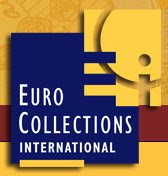
Austria 2013 20€ Stefan Zweig Silver Proof
Mint engraver Helmut Andexlinger designed the coin. On the obverse he created an excellent depiction of the soft-spoken humanist, Stefan Zweig. Zweig is holding one of his books while his kind eyes look out directly towards you. Behind his book is a typewriter, above which is located the face value of 20 euros. Zweig's signature is found in the foreground of the design. The obverse side of the coin also bears the “Europa Star” privy mark of the European silver program, as well as the country of issue “Republik Oesterreich”, Republic of Austria.
The reverse features one of his most famous works, “The Royal Game”, also known as Chess or “Schachnovelle.” Helmut has included on this side of the coin some of the key thematic elements of this work including in the center the bow of a large ocean-going steam ship on which the name “Schachnovelle” is captured, as well as the image of the protagonist. It is on the ocean vessel that the chess game between the world champion and other passengers takes place. Stefan Zweig is seen on the reverse looking at the chessboard, symbol of the challenges confronting the protagonist who sees his two personas in the white and black chess pieces. The mental anguish which this causes forces the protagonist into a mental health institute noted by the figure in stripes, peering out of the window equipped with large heavy bars.
Zweig was born in Vienna in 1881 to a wealthy textile family. His writings were very prominent in the 1920’s and 30’s. He socialized in circles that included other luminaries such as Sigmund Freud and Richard Strauss. He was a pacifist who refused to bear arms for his country. When Hitler advanced through Europe he moved from England to the USA and finally to Brazil, where he died of a drug overdose.
His writings had a global following and were quite popular in the USA as well.
Zweig's family background led him to see himself as a European. His successful father headed his Jewish family. His mother was born in Italy and had various additional connections to what was then Czechoslovakia. The family was well travelled throughout Europe and he broadened his horizons with travel to North and South America, as well as Asia and Africa. Given that he was a European with a global view. Zweig is most definitely an ideal author to be selected for the Europa series.
The Stefan Zweig coin is 900 fine silver, has a face value of 20 euros, legal tender in Austria, contains 18 grams of pure silver and has a diameter of 34 mm. The maximum mintage of this proof coin is 50,000 pieces. Each coin is encapsulated and comes in box with a sleeve and an individually numbered certificate of authenticity.






